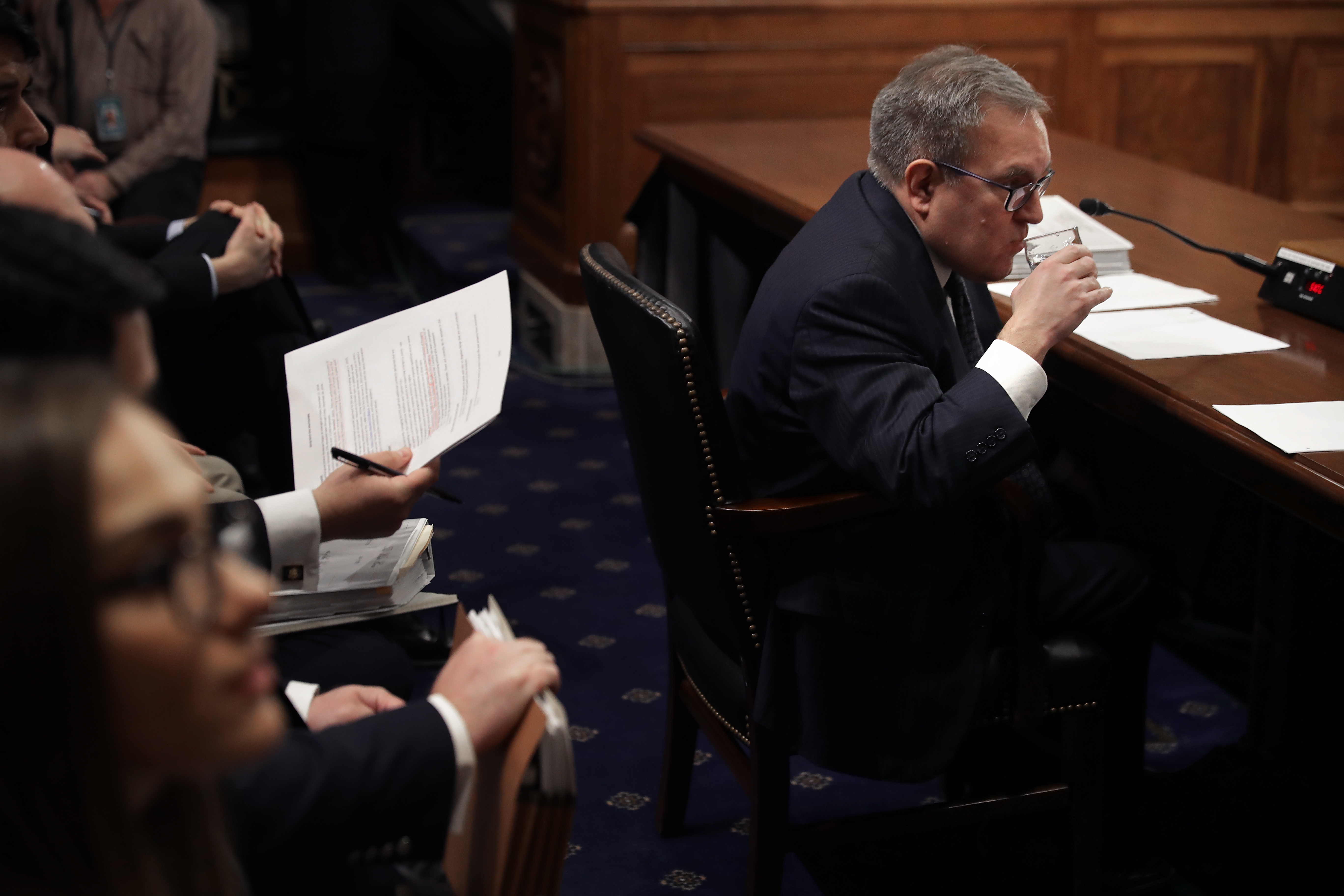The Environmental Protection Agency (EPA) on Thursday announced that it plans to tackle deadly chemicals found in many household items — from non-stick pans to dental floss — which are linked to cancer and other health problems. But experts, environmentalists, and impacted communities say it doesn’t go far enough.
The action plan unveiled on Feb. 14 does not establish Maximum Containment Levels (MCL) for the group of man-made chemicals known as per- and polyfluoroalkyl substances (PFAS) — essentially kicking efforts to really address the problem to a later date. The levels are standards are set by the EPA regarding drinking water quality, including what it deems are safe levels of contaminants.
Republicans and Democrats alike have sought a legal limit for PFAS in drinking water and the EPA has been under increasing pressure to do so. Acting EPA Administrator Andrew Wheeler emphasized on Thursday that the agency plans to set a limit — just not right now.
At present, the EPA has not issued an MCL for PFAS in drinking water. Instead, a non-enforceable health advisory level of 70 parts per trillion exists for two PFAS chemicals, PFOA and PFOS. And while Wheeler indicated on Thursday that he believes that amount is safe, experts have said the actual safe level of exposure is in fact much lower.
“This action plan is the result of unprecedented outreach to states and affected communities,” Wheeler said on Thursday in Philadelphia as the agency announced that it plans to address PFAS through a comprehensive nation-wide action plan.
The plan, Wheeler said, was devised from a series of “listening sessions” held in communities across the country suffering from PFAS contamination including Horsham, Pennsylvania, Colorado Springs, Colorado, and Fayetteville, North Carolina. Wheeler said the action plan will address the “emerging” environmental and health problems posed by PFAS.
Part of the action plan will include issuing cleanup guidance for the chemicals PFOS and PFOA and continuing the regulatory process for listing both types of PFAS as hazardous substances. Enforcement, monitoring, research, and risk communications are also listed as priority items under the action plan. But the agency stopped short of issuing an MCL for PFAS, saying instead that the EPA plans to “propose a regulatory determination” by the end of the year using the Safe Drinking Water Act as guidance.
EPA officials and Wheeler emphasized on Thursday that the action plan is “groundbreaking” and a reflection of the agency’s commitment to solving an issue that has plagued U.S. communities for years. But activists and impacted communities expressed different sentiments, arguing there is more than enough evidence that the chemicals are harmful and that action must be taken now to address the issue.
PFAS has been in use since the 1940s, and became most known for its presence in household cooking items, including non-stick pans. The chemicals are found in everything ranging from shaving cream and makeup to dental floss, as well as Teflon.
But for decades, communities have reported deadly side effects associated with PFAS. In 2017, DuPont and Chemours Co. finally agreed to pay nearly $700 million in an effort to settle thousands of lawsuits after a PFOA leak from the DuPont chemical company in Parkersburg, West Virginia was linked to numerous diseases in the area.
Experts have known of the dangers associated with PFAS for years. Its usage in firefighting foam and its widespread presence at military bases prompted the Department of Defense to launch a review of the chemicals in 2016, even as the EPA stalled in its own oversight efforts.
The EPA first threatened regulatory action over PFAS almost 20 years ago as the effects of PFOA became known. PFOA and PFOS have been slowly phased out by companies as they face scandals and lawsuits. However, in some instances they have been replaced with GenX — another form of the chemical — which has infamously polluted the Cape Fear River in North Carolina, jeopardizing drinking water for the city of Wilmington in the process.
Environmental and public health groups say that more than enough time has passed for the EPA to develop an MCL for PFAS — something the agency failed to do on Thursday.
“The vast majority of what [Wheeler] just announced already exists. The science, in particular for [PFOS and PFOA], already exists,” wrote Rob Allen, mayor of the PFAS-impacted village of Hoosick Falls, New York, in a tweet. “We know how to respond (and how not to) to the situation. There is so much literature out there related to this. This is very disappointing.”
Environmental advocates responded similarly, with the Sierra Club proclaiming that the action plan “isn’t enough” and the Southern Environmental Law Center declaring the plan to be an “empty gesture.”
“This so-called plan is actually a recipe for more PFAS contamination, not less,” said Scott Faber, senior vice president for government affairs for the Environmental Working Group, in a statement.
Wheeler declined to respond when asked if the regulatory process might ultimately result in no MCL being established, saying he expects to set a limit, but gave no firm commitments. When pressed by a military veteran about why the Defense Department has been quicker to act on PFAS than the EPA, agency officials did not respond, and instead moved to take questions from the media rather than impacted community members.

